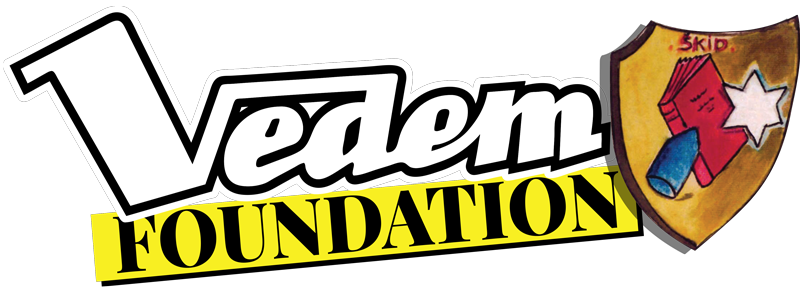FOR IMMEDIATE RELEASE
VEDEM UNDERGROUND IS FEATURED AT THE OREGON JEWISH MUSEUM
PORTLAND, OREGON, Feb. 9, 2018 – The VEDEM Foundation is proud to present VEDEM UNDERGROUND at the Oregon Jewish Museum from Feb. 9 through June 8, 2018. Called “the Dead Poets Society of Terezin” by Los Angeles’s Jewish Journal, VEDEM UNDERGROUND is an art installation that deconstructs and reinterprets the literary work of the teenage Jewish creators of the longest-running underground magazine in a Nazi camp. From 1942 to 1944, Vedem (“In the Lead” in Czech) chronicled life within the walls of Czechoslovakia’s Terezin Ghetto, and was a symbol of protest, rebellion and creative activism by some of the era’s youngest resistance fighters. The exhibit premiered at the Simon Wiesenthal Center’s Museum of Tolerance in Los Angeles in 2016, and has since been presented in Houston, El Paso, Austin and Sacramento. It is scheduled to travel to at least ten additional U.S. locations, including Amarillo, Dallas, Milwaukee and Canada by 2019.
Using a combination of pop-art graphics, archival photographs and cartoons, and the prose and poetry created by the magazine’s contributors, VEDEM UNDERGROUND celebrates the artistic and cultural legacy of Vedem by breaking down its 83 weekly issues totaling the 800 pages, then reconstructing them in the form of a contemporary magazine.
VEDEM UNDERGROUND was produced and curated by Rina Taraseiskey, whose grandfather led the resistance at Lithuania’s Kovno Ghetto and who is also co-writing the companion book Vedem Underground: Pages of Resistance and producing the Vedem Underground documentary film with an Oscar- and Emmy- award winning team; Los Angeles-based art director Michael Murphy, who conceptualized the exhibit as a merging of punk subculture-inspired art and the 1940s-era ‘zine aesthetic; and Los Angeles-based writer and journalist Danny King, who is producing and co-writing the companion book.
“It’s been an honor to showcase the incredibly courageous and creative work by some of the youngest resistance fighters of the World War II era,” said Rina Taraseiskey. “These teenage boys refused to give up their identity, their humanity and their fighting spirit.”
“I was motivated to combine the feel of a 1940s-era ‘zine with something that would be more relatable today, especially to younger people,” said Murphy. “These boys were rebels, so I took a more contemporary, almost punk-rock approach.”
“These boys were risking their lives in order to do this and they used nicknames to hide their identities,” said Danny King. “Vedem reflected the stark reality of life inside Terezin, but it was also an escape for them. They expressed their opinions with humor, cartoons and poetry. They could forget that they were in prison.”
VEDEM UNDERGROUND was the winner of the 2016 WORD Grant: The Bruce Geller Memorial Prize, a project of American Jewish University’s Institute for Jewish Creativity. The exhibit has also been generously supported by the Jewish Community Foundation of Los Angeles. Other support for the project comes from Steven Spielberg’s Righteous Persons Foundation and The Ziering Foundation.
CONTACT:
Rina Taraseiskey
Founder and Executive Director, VEDEM Foundation
323.397.6423
www.vedemunderground.com.
ABOUT VEDEM UNDERGROUND: Vedem Underground is a multimedia project that celebrates the courageous, heartbreaking and ultimately victorious legacy of Vedem (“In the Lead” in Czech), the longest-running underground magazine to be regularly produced by prisoners inside a Nazi concentration camp. The project teaches tolerance and encourages artistic activism through Vedem‘s historic and cultural lessons. The project includes a museum exhibit, a documentary feature film, a companion book and a cutting edge educational program. The exhibit premiered in May 2016, the book will be completed in mid-2018 and the film is slated for release by the end of 2018.
ABOUT OREGON JEWISH MUSEUM AND CENTER FOR HOLOCAUST EDUCATION: The Oregon Jewish Museum is the largest museum dedicated to the documented and visual history of the Jewish people of Oregon. The museum’s mission is to interpret the Oregon Jewish experience, explore the lessons of the Holocaust and foster intercultural conversations.
